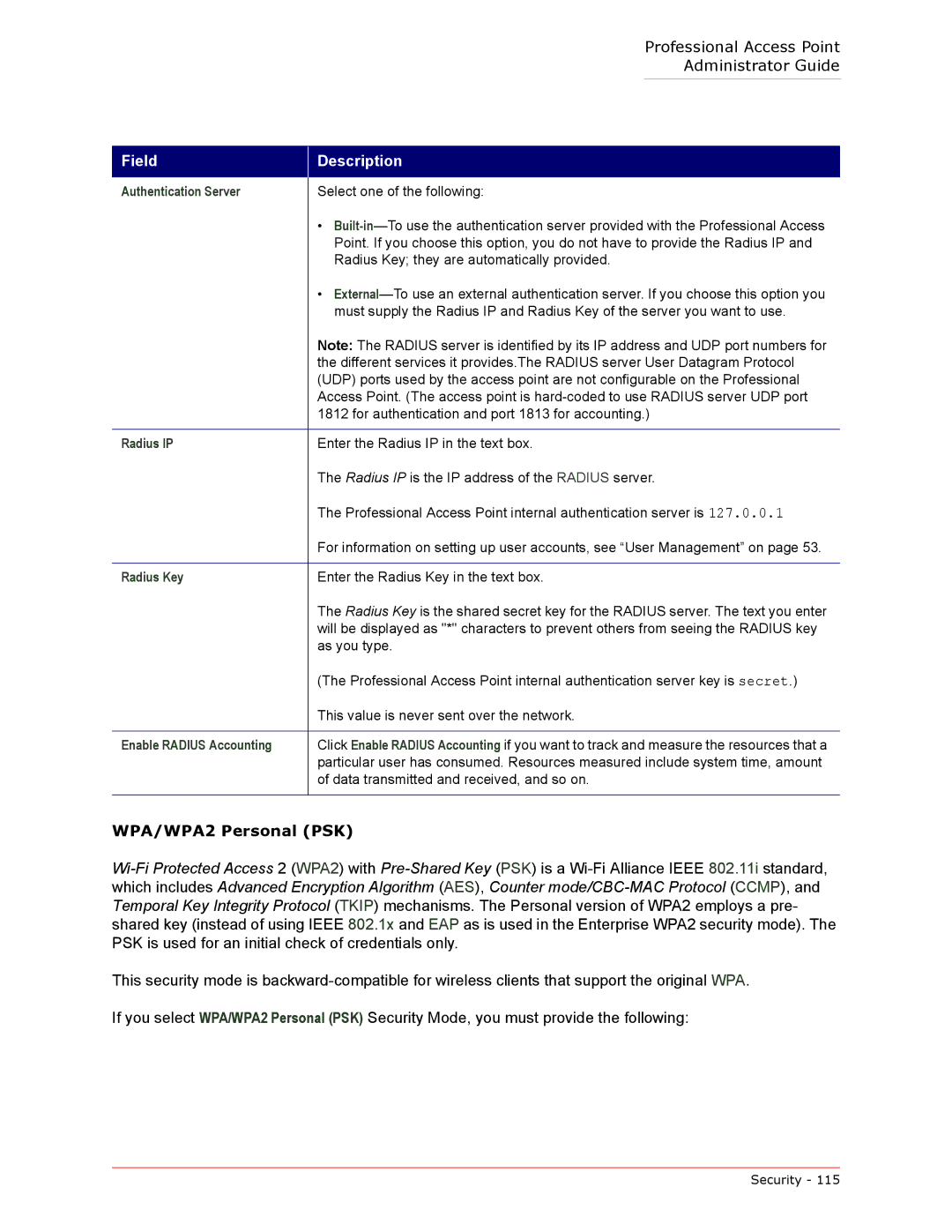
Professional Access Point Administrator Guide
Field
Description
Authentication Server | Select one of the following: |
| • |
| Point. If you choose this option, you do not have to provide the Radius IP and |
| Radius Key; they are automatically provided. |
| • |
| must supply the Radius IP and Radius Key of the server you want to use. |
| Note: The RADIUS server is identified by its IP address and UDP port numbers for |
| the different services it provides.The RADIUS server User Datagram Protocol |
| (UDP) ports used by the access point are not configurable on the Professional |
| Access Point. (The access point is |
| 1812 for authentication and port 1813 for accounting.) |
|
|
Radius IP | Enter the Radius IP in the text box. |
| The Radius IP is the IP address of the RADIUS server. |
| The Professional Access Point internal authentication server is 127.0.0.1 |
| For information on setting up user accounts, see “User Management” on page 53. |
|
|
Radius Key | Enter the Radius Key in the text box. |
| The Radius Key is the shared secret key for the RADIUS server. The text you enter |
| will be displayed as "*" characters to prevent others from seeing the RADIUS key |
| as you type. |
| (The Professional Access Point internal authentication server key is secret.) |
| This value is never sent over the network. |
|
|
Enable RADIUS Accounting | Click Enable RADIUS Accounting if you want to track and measure the resources that a |
| particular user has consumed. Resources measured include system time, amount |
| of data transmitted and received, and so on. |
|
|
WPA/WPA2 Personal (PSK)
This security mode is
If you select WPA/WPA2 Personal (PSK) Security Mode, you must provide the following:
Security - 115
